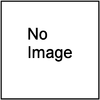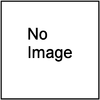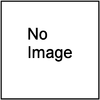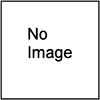 A detailed description of operations of the Canadain troops in Normandy from 1 to 23 August 1944. This volume contains details of the plans for the breakout beyond Caen, Operation Totalize, the Mortain counter-offensive and the advance of the US Third Army, Operation Tractable, the envelopment of Falaise, closing the gap and casualties and enemy losses.
This report is important in that it gives a second opinion on these important operations, and complements the National Archive CAB papers on this period, to be published by MLRS in the near future.
A detailed description of operations of the Canadain troops in Normandy from 1 to 23 August 1944. This volume contains details of the plans for the breakout beyond Caen, Operation Totalize, the Mortain counter-offensive and the advance of the US Third Army, Operation Tractable, the envelopment of Falaise, closing the gap and casualties and enemy losses.
This report is important in that it gives a second opinion on these important operations, and complements the National Archive CAB papers on this period, to be published by MLRS in the near future.
 Operations of Canadian forces in Europe from 23 Aug to 30 Sep 1944. This report looks at the advance to the Seine (including the advance by 1 British Corps), preparations for crossing the Seine, clearing the Foret de la Londe, the German retreat across the Seine to the Somme, and the allied advance to Ghent and Dunkirk.
Operations of Canadian forces in Europe from 23 Aug to 30 Sep 1944. This report looks at the advance to the Seine (including the advance by 1 British Corps), preparations for crossing the Seine, clearing the Foret de la Londe, the German retreat across the Seine to the Somme, and the allied advance to Ghent and Dunkirk.
 The history of 30 Corps from Normandy to the end of the war in Europe.
This book gives a first-hand account of 30 Corps operations from D-Day to the end of the war. It tells of Corps movements across the Seine and through Flanders and Holland and into Germany. There are details also of the attempt by 30 Corps to reach Arnhem, and the Ardennes battles of winter 1944. The Rhine crossing is covered in some detail.
This is a valuable addition to any collection, and originals are scarce.
The history of 30 Corps from Normandy to the end of the war in Europe.
This book gives a first-hand account of 30 Corps operations from D-Day to the end of the war. It tells of Corps movements across the Seine and through Flanders and Holland and into Germany. There are details also of the attempt by 30 Corps to reach Arnhem, and the Ardennes battles of winter 1944. The Rhine crossing is covered in some detail.
This is a valuable addition to any collection, and originals are scarce.
 The British Commandos were formed to carry out raids in Europe and were soon on the attack. This really good account was written during the Second World War and covers the formation of the Commandos and their early raids on Vaagso, St Nazaire and finally Dieppe, where 4 Commando distinguished themselves. Complete with operational maps and many photographs.
The British Commandos were formed to carry out raids in Europe and were soon on the attack. This really good account was written during the Second World War and covers the formation of the Commandos and their early raids on Vaagso, St Nazaire and finally Dieppe, where 4 Commando distinguished themselves. Complete with operational maps and many photographs.
This title consists of two original publications, both covering individual companies of the Rifle Brigade: the first is "From the beaches to the Baltic" - G Company, the second, H Company, is compiled from the company war diary. What is important about the two publications is that they are simple, day to day accounts of men in battle. Nothing more needs to be said except to emphasise their importance to all students of military history.
 A handbook on hand-to-hand combat written by W E Fairburn, famous for his joint invention, the Fairburn-Sykes fighting knife, issued to all British Commandos. Very simple, very clear and very effective - with many illustrations of methods of disarming and killing the enemy, and of getting out of tight corners.
A handbook on hand-to-hand combat written by W E Fairburn, famous for his joint invention, the Fairburn-Sykes fighting knife, issued to all British Commandos. Very simple, very clear and very effective - with many illustrations of methods of disarming and killing the enemy, and of getting out of tight corners.
 This valuable pamphlet gives a great deal of information on the conditions in the Far East and on fighting the Japanese. It includes notes on how to treat the native population, how to survive in the jungle, and what the Japanese were doing - and how to beat the enemy.
It is very valuable to students of jungle warfare because it deals with the subject at an intimate level, and gives many examples from the fighting in the jungle in the various countries and territories in which the Japanese were engaged.
This valuable pamphlet gives a great deal of information on the conditions in the Far East and on fighting the Japanese. It includes notes on how to treat the native population, how to survive in the jungle, and what the Japanese were doing - and how to beat the enemy.
It is very valuable to students of jungle warfare because it deals with the subject at an intimate level, and gives many examples from the fighting in the jungle in the various countries and territories in which the Japanese were engaged.
 The North African campaign produced local variations in doctrine and training, and many pamphlets designed for North West Europe were not suitable for the desert. These Middle East Training pamphlets were issued to cover the gaps in knowledge and method, and were bound into two volumes and kept at the Museum of The Royal Logistic Corps where they were found. They are reprinted exactly as the originals with the exception that some plates have been reduced in size for ease of printing, but losing none of their detail.
The North African campaign produced local variations in doctrine and training, and many pamphlets designed for North West Europe were not suitable for the desert. These Middle East Training pamphlets were issued to cover the gaps in knowledge and method, and were bound into two volumes and kept at the Museum of The Royal Logistic Corps where they were found. They are reprinted exactly as the originals with the exception that some plates have been reduced in size for ease of printing, but losing none of their detail.
 This is a complete account of operations of 8 Corps from the Normandy landings to the end of the war when the Corps was on the shores of the Baltic.
Originally published privately in two volumes, this publication is a combination of both, and includes 7 A2 maps to illustrate the movements of the Corps on the ground.
Part I includes the role of the Corps in the invasion, and in operations Epsom, Goodwood and Bluecoat, and the advance to the River Maas.
Part II covers operations from the Rhine crossing to the end of the war.
There are 7 A2 maps in colour at the rear of the book, a reproduction of all the oversized maps from the original.
This is a complete account of operations of 8 Corps from the Normandy landings to the end of the war when the Corps was on the shores of the Baltic.
Originally published privately in two volumes, this publication is a combination of both, and includes 7 A2 maps to illustrate the movements of the Corps on the ground.
Part I includes the role of the Corps in the invasion, and in operations Epsom, Goodwood and Bluecoat, and the advance to the River Maas.
Part II covers operations from the Rhine crossing to the end of the war.
There are 7 A2 maps in colour at the rear of the book, a reproduction of all the oversized maps from the original.
 Operations in France and Flanders 1940: the German invasion of the Low Countries and France, and the Allied operations in response.The papers of Lord Gort were used to compile this account of operations leading up to Dunkirk, and the evacuation. Of particular importance to students of the early stages of World War II.
Operations in France and Flanders 1940: the German invasion of the Low Countries and France, and the Allied operations in response.The papers of Lord Gort were used to compile this account of operations leading up to Dunkirk, and the evacuation. Of particular importance to students of the early stages of World War II.
 The Canadian Army performed a pivotal role in the Second World War, which is sometimes almost ignored. This book shows why this error in perception needs to be corrected. MLRS has already published a number of important papers on Canadian operations during the Second World War, and this book gives an overall view of everything the Canadians did to help the military effort against the Axis forces. Canadians guarded Britain, raided German installations (especially Dieppe), and fought through Sicily and Italy before taking part in Operation Overlord and the defeat of Germany. They were also in the Far East, and many Canadians fought in the British Army. This is their account, an honourable story. Includes OrBats for infantry and armoured units in 1945. Illustrated, and with 15 coloured maps.
The Canadian Army performed a pivotal role in the Second World War, which is sometimes almost ignored. This book shows why this error in perception needs to be corrected. MLRS has already published a number of important papers on Canadian operations during the Second World War, and this book gives an overall view of everything the Canadians did to help the military effort against the Axis forces. Canadians guarded Britain, raided German installations (especially Dieppe), and fought through Sicily and Italy before taking part in Operation Overlord and the defeat of Germany. They were also in the Far East, and many Canadians fought in the British Army. This is their account, an honourable story. Includes OrBats for infantry and armoured units in 1945. Illustrated, and with 15 coloured maps.
 This volume in our canadian series covers Canadian troops during their 'watch on the Maas' in the winter of 1944/45.
It shows that 1 Canadian Army was not in a backwater of the war, and that there was a lot of enemy activity during that very cold winter.
Also contains details of the preparation for Operation Veritable and the attack on Kapelshieveer.
See also our other canadian army reports.
This volume in our canadian series covers Canadian troops during their 'watch on the Maas' in the winter of 1944/45.
It shows that 1 Canadian Army was not in a backwater of the war, and that there was a lot of enemy activity during that very cold winter.
Also contains details of the preparation for Operation Veritable and the attack on Kapelshieveer.
See also our other canadian army reports.
 This is the single most important text on the subject of the gun in the British Army during the Second World War. It is complete in all detail, and exceptionally well illustrated with diagrams, photographs and maps. It covers the following topics: Pre-War developments Antiaircraft artillery Antitank artillery Anti-mortar methods The War in North Africa, Italy, NWEurope and the Far East. Within the text there are descriptions of all equipments used, and where they were in action. There are also details of shell, fuses, fire control equipment and the myriad of other equipment needed by the gunner to get his shell onto the target. The fire plans alone are worth the price of this book, covering operations in NW Europe and in the Far East in specific detail. This is a book which we recommend unreservedly to any historian of the Second World War. Also contains comparisons between British and foreign artillery and antitank guns. Originals are very difficult to find.
This is the single most important text on the subject of the gun in the British Army during the Second World War. It is complete in all detail, and exceptionally well illustrated with diagrams, photographs and maps. It covers the following topics: Pre-War developments Antiaircraft artillery Antitank artillery Anti-mortar methods The War in North Africa, Italy, NWEurope and the Far East. Within the text there are descriptions of all equipments used, and where they were in action. There are also details of shell, fuses, fire control equipment and the myriad of other equipment needed by the gunner to get his shell onto the target. The fire plans alone are worth the price of this book, covering operations in NW Europe and in the Far East in specific detail. This is a book which we recommend unreservedly to any historian of the Second World War. Also contains comparisons between British and foreign artillery and antitank guns. Originals are very difficult to find.
 This manual covers the organisation and role of the US rifle company in the Infantry Regiment, and was issued in March 1944, just before the Allied landings in Normandy on D-Day.
It covers offensive and defensive combat for rifle platoons and squads (sections), and also contains similar information for the weapons platoon.
Methods covered include fighting in woods, built-up areas and on river lines, and assaults on fortified positions.
Of real importance in understanding how the Americans intended to fight when they met the Germans in France and beyond.
This manual covers the organisation and role of the US rifle company in the Infantry Regiment, and was issued in March 1944, just before the Allied landings in Normandy on D-Day.
It covers offensive and defensive combat for rifle platoons and squads (sections), and also contains similar information for the weapons platoon.
Methods covered include fighting in woods, built-up areas and on river lines, and assaults on fortified positions.
Of real importance in understanding how the Americans intended to fight when they met the Germans in France and beyond.
 The US Army had so many vehicles and vehicle types that without this manual it would have been difficult even in 1943 to know exactly what each one was, and what it was intended for. The manual covers everything from motor cycles to tanks, and every variation of those plus trucks, cars, tank transporters and others. Each vehicle has a two-page spread with a photograph, dimension drawings and details of the vehicles performance. Ideal for vehicle historians, war gamers, all those interested in vehicles (wheeled and tracked) and as a handy reference book for all those occasionally needing to know details of how the US Army moved during the Second World War. Very few additional vehicles appeared after the publication of this important manual.
The US Army had so many vehicles and vehicle types that without this manual it would have been difficult even in 1943 to know exactly what each one was, and what it was intended for. The manual covers everything from motor cycles to tanks, and every variation of those plus trucks, cars, tank transporters and others. Each vehicle has a two-page spread with a photograph, dimension drawings and details of the vehicles performance. Ideal for vehicle historians, war gamers, all those interested in vehicles (wheeled and tracked) and as a handy reference book for all those occasionally needing to know details of how the US Army moved during the Second World War. Very few additional vehicles appeared after the publication of this important manual.
MLRS Books provide a download service for military historians and those interested in military history.
We specialise in primary source material and accounts which are assembled from such sources. We also publish new titles of specific interest in the field of military history and military genealogy.
MLRS Books offers a catalogue of resources via download only and
these are not printable. Should you want physical copies of our products, we
recommend visiting Caliver Books.
Payment is via Paypal, and prices are as quoted. Hopefully you will be pleased with your purchase,
however, do e-mail if it isn't and we'll try to fix it.


